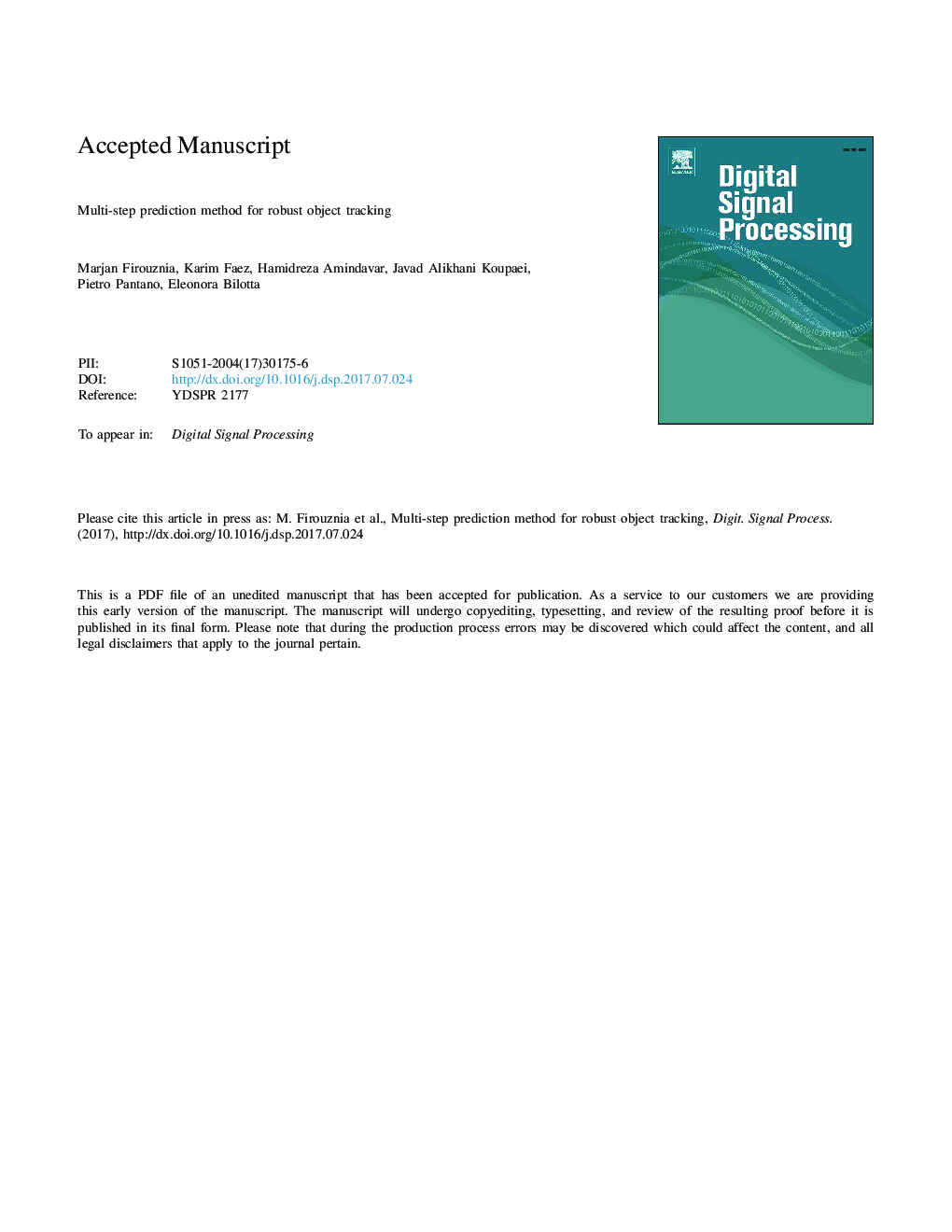| Article ID | Journal | Published Year | Pages | File Type |
|---|---|---|---|---|
| 4973764 | Digital Signal Processing | 2017 | 26 Pages |
Abstract
In this paper, multi-step ahead prediction method for object tracking based on chaos theory is introduced. The chaos theory is used to preserve the information of object's movement and to model uncertainty and nonlinearity of movement in video sequences. The methodology of the algorithm includes three steps. First, adaptive pseudo-orbit data assimilation is applied to estimate the next state by using the previous states of object. Second, the ensemble members of the state are generated to predict multi-step prediction. Then, the likelihood function of members selects candidate patch for target detection using color information. The algorithm significantly reduces the prediction error because of high-order dynamical information of motion and chaotic prediction. To verify the efficiency of the tracker, the tracking algorithm is compared with the stochastic and deterministic methods under two datasets. The results demonstrate that the chaotic-based tracker outperforms other state-of-the-art methods on the abrupt motion, occlusion, and out of view. The algorithm is about two times faster than the particle filter method while the error of particle filter is about two times more than the error of the chaotic-based tracking method.
Related Topics
Physical Sciences and Engineering
Computer Science
Signal Processing
Authors
Marjan Firouznia, Karim Faez, Hamidreza Amindavar, Javad Alikhani Koupaei, Pietro Pantano, Eleonora Bilotta,
